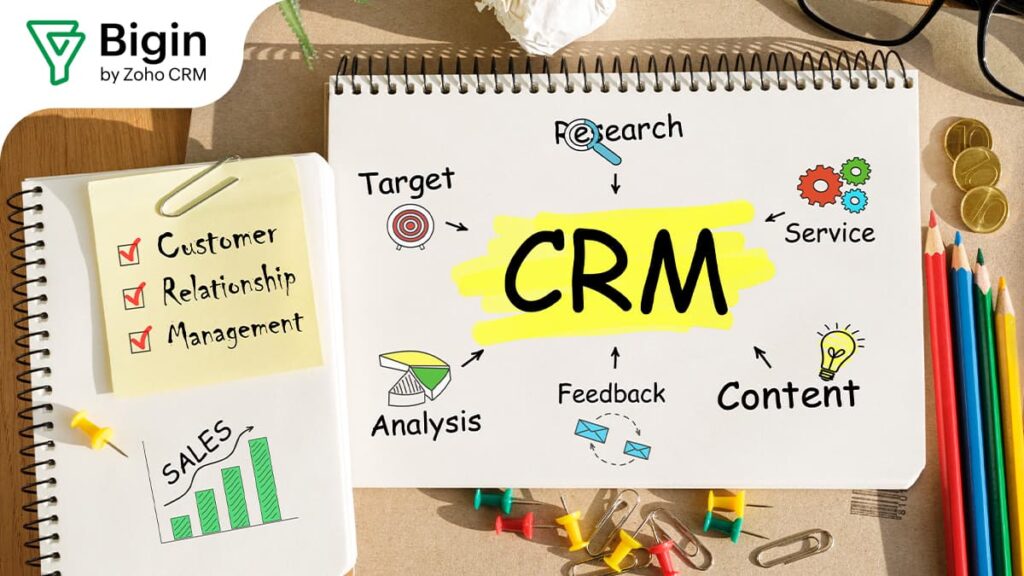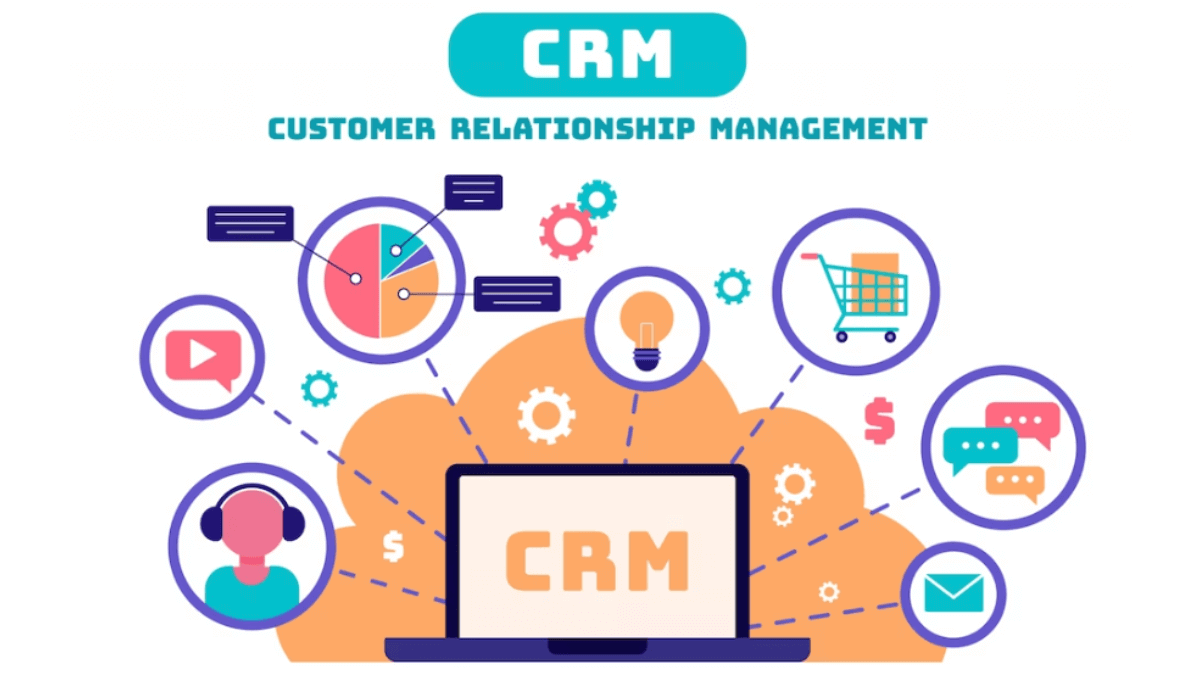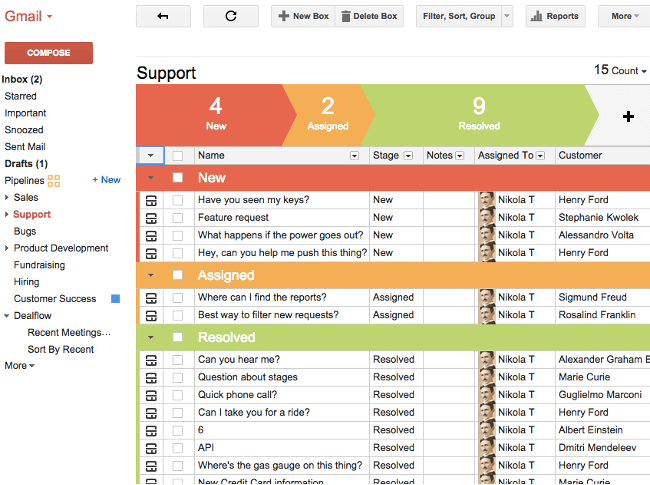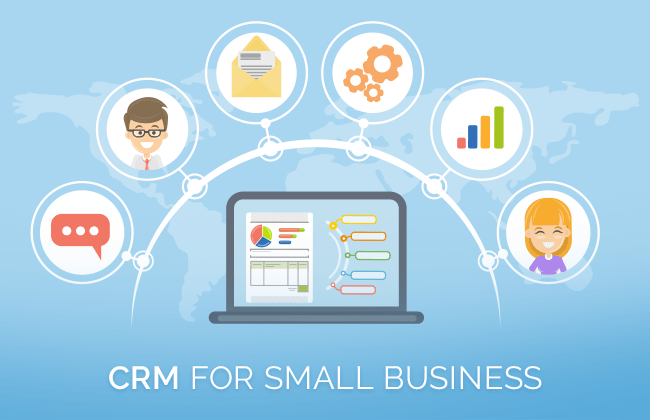
Introduction: Why Your Small Business Needs a CRM
Running a small business is like conducting an orchestra. You’ve got multiple moving parts – marketing, sales, customer service, and operations – all needing to work in harmony. Without proper coordination, the performance can fall flat. This is where a Customer Relationship Management (CRM) system steps in, acting as the conductor, helping you manage and orchestrate every interaction with your customers.
In today’s competitive landscape, understanding and catering to your customers is more critical than ever. A CRM isn’t just a fancy piece of software; it’s the backbone of your customer-centric strategy. It empowers you to capture, organize, and analyze customer data, enabling you to build stronger relationships, boost sales, and improve overall business efficiency. The goal? Happy customers, loyal customers, and a thriving business.
This comprehensive guide is designed to walk you through the entire CRM setup process, from choosing the right system to implementing it effectively. We’ll cover everything you need to know, step by step, to ensure a smooth transition and maximize the benefits for your small business. Get ready to transform the way you connect with your customers!
Chapter 1: Understanding the Fundamentals of CRM
Before diving into the setup, let’s establish a solid foundation. What exactly *is* a CRM? At its core, a CRM is a technology that helps you manage and analyze customer interactions and data throughout the customer lifecycle. It’s a central hub for all customer-related information, accessible to your entire team.
What Does a CRM Do?
A well-implemented CRM system performs a multitude of functions, including:
- Contact Management: Stores and organizes customer contact information, including names, addresses, phone numbers, email addresses, and social media profiles.
- Lead Management: Tracks leads from initial contact through the sales pipeline, helping you nurture them and convert them into customers.
- Sales Automation: Automates repetitive sales tasks, such as follow-up emails and appointment scheduling, freeing up your sales team to focus on building relationships.
- Marketing Automation: Enables you to create and manage marketing campaigns, track their performance, and personalize your messaging.
- Customer Service: Provides a platform for managing customer inquiries, resolving issues, and providing excellent customer support.
- Reporting and Analytics: Generates reports and provides insights into your sales, marketing, and customer service performance, enabling data-driven decision-making.
The Benefits of Using a CRM for Small Businesses
The advantages of using a CRM are numerous, especially for small businesses seeking to grow and thrive:
- Improved Customer Relationships: By centralizing customer data and providing a 360-degree view of each customer, a CRM allows you to personalize interactions and build stronger relationships.
- Increased Sales: CRM systems help you streamline your sales process, identify and nurture leads, and close deals more efficiently, leading to increased sales and revenue.
- Enhanced Customer Service: A CRM provides a platform for managing customer inquiries and resolving issues quickly and efficiently, leading to higher customer satisfaction and loyalty.
- Greater Efficiency: CRM systems automate repetitive tasks and streamline workflows, freeing up your team to focus on more strategic activities.
- Better Data-Driven Decisions: By providing access to valuable data and analytics, a CRM enables you to make informed decisions about your sales, marketing, and customer service strategies.
- Improved Team Collaboration: A CRM provides a central hub for all customer-related information, facilitating collaboration and communication among your team members.
Chapter 2: Choosing the Right CRM for Your Small Business
Selecting the right CRM is a crucial step. The market is flooded with options, each with its own set of features, pricing models, and target audiences. Taking the time to research and evaluate your options is essential to find a system that aligns with your specific needs and budget.
Identify Your Needs and Goals
Before you start comparing CRM systems, take some time to define your needs and goals. What are you hoping to achieve with a CRM? What are your biggest pain points in managing customer relationships? Consider the following questions:
- What are your primary business goals? (e.g., increase sales, improve customer service, streamline marketing efforts)
- What are your current processes for managing customer data? (e.g., spreadsheets, email, manual processes)
- What features are essential for your business? (e.g., contact management, lead management, sales automation, marketing automation, customer service)
- What is your budget? (Consider both the upfront costs and the ongoing subscription fees.)
- How many users will need access to the CRM?
- Do you need any integrations with other software? (e.g., email marketing platforms, accounting software)
Answering these questions will help you create a clear picture of your requirements and narrow down your options.
Research and Compare CRM Systems
Once you have a clear understanding of your needs, it’s time to start researching and comparing CRM systems. There are many options available, ranging from simple, affordable solutions to more complex, feature-rich platforms. Here are some popular CRM systems to consider, along with their general strengths:
- HubSpot CRM: A popular choice for small businesses, HubSpot CRM offers a free version with robust features for contact management, sales, and marketing. It’s known for its user-friendly interface and ease of use.
- Zoho CRM: Zoho CRM is a comprehensive platform that offers a wide range of features for sales, marketing, and customer service. It’s a good option for businesses looking for a more feature-rich solution at a competitive price.
- Salesforce Sales Cloud: A leading CRM platform, Salesforce offers a highly customizable and scalable solution. While it can be more complex and expensive, it’s a good choice for businesses with more advanced needs.
- Pipedrive: Pipedrive is a sales-focused CRM that’s designed to help sales teams manage their pipelines and close deals. It’s known for its visual interface and ease of use.
- Freshsales: Freshsales is a CRM built by Freshworks, offering a streamlined and intuitive experience. It focuses on sales automation and lead management.
When comparing CRM systems, consider the following factors:
- Features: Does the CRM offer the features you need to achieve your goals?
- Ease of Use: Is the CRM user-friendly and easy to navigate? Consider the learning curve for your team.
- Pricing: Does the pricing model fit your budget?
- Integrations: Does the CRM integrate with other software you use?
- Scalability: Can the CRM scale with your business as it grows?
- Customer Support: Does the vendor offer adequate customer support?
- Reviews and Ratings: Read reviews and ratings from other users to get an idea of their experiences with the CRM.
Free vs. Paid CRM: What’s Right for You?
Many CRM providers offer both free and paid versions. The free versions typically offer a limited set of features and are suitable for very small businesses or those just starting out. Paid versions offer more advanced features, increased storage, and support for a larger number of users. Consider the following when deciding between a free and paid CRM:
- Your Business Size: A free CRM might suffice if you’re a solopreneur or have a very small team. As your team grows, you’ll likely need a paid version.
- Your Needs: Do you need advanced features like sales automation, marketing automation, or detailed reporting? If so, you’ll need a paid CRM.
- Your Budget: Paid CRM systems come with monthly or annual fees. Make sure you factor this into your budget.
Start with a free trial or a free version to get a feel for the software and see if it meets your basic needs. You can always upgrade to a paid version later as your business grows and your requirements evolve.
Chapter 3: Setting Up Your CRM: A Step-by-Step Guide
Once you’ve chosen your CRM, it’s time to set it up. This process can vary depending on the CRM you choose, but the general steps are similar.
Step 1: Create Your Account and Log In
The first step is to create an account with your chosen CRM provider. This typically involves providing your business information, selecting a subscription plan (if applicable), and creating a username and password. Once your account is created, log in to access the CRM.
Step 2: Customize Your CRM Settings
Most CRM systems allow you to customize various settings to match your business needs. This might include:
- Company Information: Add your company name, logo, address, and other relevant information.
- User Accounts: Create user accounts for each member of your team who will be using the CRM. Assign roles and permissions to control access to different features and data.
- Currency and Time Zone: Set your currency and time zone.
- Data Fields: Customize the standard data fields (e.g., contact name, email address, phone number) and add custom fields to capture specific information relevant to your business.
- Workflow Automation: Set up workflows to automate repetitive tasks, such as sending welcome emails or assigning leads to team members.
Take the time to explore the settings and customize them to your specific requirements.
Step 3: Import Your Data
One of the most crucial steps is importing your existing customer data into the CRM. This typically involves importing data from spreadsheets (e.g., CSV files) or other sources. The CRM will provide templates or instructions for formatting your data correctly. Make sure your data is clean and accurate before importing it. Here’s how to approach data import:
- Prepare Your Data: Clean and organize your data in a spreadsheet. This includes removing duplicates, correcting errors, and ensuring consistent formatting.
- Choose Your Import Method: Most CRMs support importing data via CSV files, spreadsheets, or integrations with other platforms.
- Map Your Fields: Map the fields in your spreadsheet to the corresponding fields in the CRM.
- Import Your Data: Upload your data and review the import results to ensure everything was imported correctly.
Accurate data import is critical for the success of your CRM implementation. A little time spent upfront on data cleansing will save you headaches later.
Step 4: Configure Integrations
Integrations allow your CRM to connect with other software you use, such as email marketing platforms, accounting software, and social media. This helps you streamline your workflows and centralize your data. Configure the integrations relevant to your business. This may involve connecting your email provider, setting up integrations with marketing tools, and linking with accounting software.
Step 5: Train Your Team
Training your team is essential to ensure they can effectively use the CRM. Provide training on how to use the CRM’s features, enter data, and navigate the system. Consider creating training materials, such as user guides and videos, to help your team learn the system. Ongoing training and support are also important. Make sure your team knows how to use the CRM effectively. Provide training on its features and functionalities. Consider creating user guides and videos to help your team learn. Ongoing support and updates will help keep everyone on the same page.
Step 6: Test and Refine
Before fully implementing the CRM, test it thoroughly. Enter some sample data, run some reports, and test the workflows. Identify any issues and make adjustments as needed. Gather feedback from your team and refine the system based on their input.
Chapter 4: Key Features and How to Use Them Effectively
Now that your CRM is set up, let’s explore some key features and how to use them to maximize your business results.
Contact Management
Contact management is the foundation of any CRM. It involves storing and organizing customer contact information. Make sure you’re collecting and maintaining accurate contact details, including names, phone numbers, email addresses, and social media profiles. Use contact management to segment your contacts based on various criteria, such as demographics, purchase history, and lead source. This will enable you to personalize your communications and target your marketing efforts more effectively.
Lead Management
Lead management is the process of tracking and nurturing leads through the sales pipeline. Use your CRM to capture leads from various sources, such as website forms, social media, and marketing campaigns. Track lead interactions, such as emails, calls, and meetings. This will help you understand their interests and needs. Set up automated workflows to nurture leads. This might include sending automated follow-up emails, scheduling appointments, and assigning leads to sales representatives. Use the CRM to track lead conversion rates and identify areas for improvement.
Sales Automation
Sales automation helps you streamline your sales process and free up your sales team’s time. Automate repetitive tasks, such as sending follow-up emails, scheduling appointments, and creating quotes. Use the CRM to track sales opportunities and manage your sales pipeline. Set up automated alerts and notifications to keep your team informed of important sales activities. Analyze your sales data to identify areas for improvement and optimize your sales process.
Marketing Automation
Marketing automation helps you automate your marketing campaigns and personalize your messaging. Use the CRM to segment your audience and create targeted marketing campaigns. Automate the process of sending emails, social media posts, and other marketing materials. Track the performance of your marketing campaigns and analyze the results. Use the insights to improve your marketing efforts.
Customer Service
Customer service is about providing excellent support to your customers. Use the CRM to track customer inquiries, resolve issues, and manage customer interactions. Provide your customer service team with access to customer data, so they can quickly and efficiently resolve customer issues. Set up automated responses to common customer inquiries. Track customer satisfaction and identify areas for improvement in your customer service process.
Reporting and Analytics
Reporting and analytics provide valuable insights into your business performance. Generate reports on your sales, marketing, and customer service activities. Analyze the data to identify trends, patterns, and areas for improvement. Use the insights to make data-driven decisions and optimize your business strategies.
Chapter 5: Best Practices for CRM Success
To ensure your CRM implementation is successful, follow these best practices:
Data Quality is King
The success of your CRM hinges on the quality of your data. Make sure your data is accurate, complete, and up-to-date. Regularly clean and update your data to remove errors and duplicates. Implement data validation rules to ensure data is entered correctly. Encourage your team to prioritize data quality.
User Adoption is Key
The CRM is only as effective as the people who use it. Train your team effectively and provide ongoing support. Make the CRM easy to use and integrate it into your team’s daily workflows. Encourage user adoption by highlighting the benefits of using the CRM. Get feedback from your team and make adjustments as needed.
Regularly Review and Optimize
Your CRM implementation is not a one-time event; it’s an ongoing process. Regularly review your CRM setup and workflows. Identify areas for improvement and make adjustments as needed. Stay up-to-date with the latest CRM features and best practices. Adapt your CRM strategy as your business evolves.
Integrate with Other Tools
Integrate your CRM with other tools you use, such as email marketing platforms, accounting software, and social media. This will help you streamline your workflows and centralize your data. Choose integrations that are relevant to your business needs.
Start Small and Scale Up
Don’t try to implement everything at once. Start with the core features and gradually add more features as your team becomes comfortable with the system. This will help you avoid overwhelming your team and ensure a smooth implementation.
Chapter 6: Troubleshooting Common CRM Issues
Even with careful planning, you may encounter some issues during your CRM implementation. Here are some common problems and how to solve them:
Data Import Errors
Data import errors are common. Double-check your data formatting and mapping. Review the import logs to identify any errors and correct them. If you’re having trouble, contact your CRM provider’s support team for assistance.
User Adoption Problems
If your team isn’t using the CRM, it’s not going to be effective. Provide adequate training and support. Highlight the benefits of using the CRM and make it easy to integrate into their workflows. Get feedback from your team and address their concerns.
Integration Issues
If you’re having trouble with integrations, double-check your settings and ensure the integrations are properly configured. Contact the support teams for both the CRM and the integrated software. Test the integrations thoroughly to ensure they’re working correctly.
Performance Issues
If the CRM is running slowly, check your internet connection and ensure you’re using the latest version of the software. If the problem persists, contact your CRM provider’s support team for assistance.
Chapter 7: The Future of CRM for Small Businesses
The world of CRM is constantly evolving. Here are some trends to watch:
- Artificial Intelligence (AI): AI is being used to automate tasks, personalize customer interactions, and provide insights into customer behavior.
- Mobile CRM: Mobile CRM solutions are becoming more popular, allowing businesses to access their CRM data on the go.
- Integration with Social Media: CRM systems are increasingly integrating with social media platforms, allowing businesses to track and manage customer interactions on social media.
- Focus on Customer Experience: CRM systems are becoming more focused on improving the customer experience.
Staying informed about these trends will help you stay ahead of the curve and make the most of your CRM investment.
Conclusion: Embrace the Power of CRM
Setting up a CRM for your small business may seem like a daunting task, but with the right approach, it can be a transformative experience. By following the steps outlined in this guide, you can choose the right CRM, set it up effectively, and empower your team to build stronger customer relationships, boost sales, and achieve sustainable growth.
Remember, a CRM is more than just software; it’s a strategic investment in your business’s future. Embrace the power of CRM and watch your business thrive!


